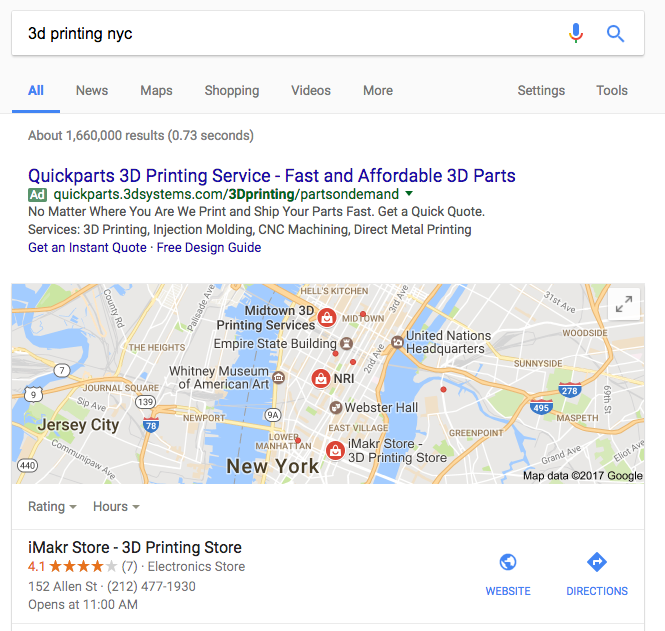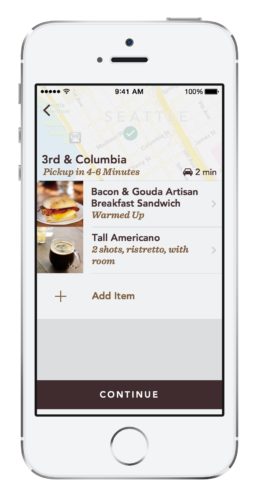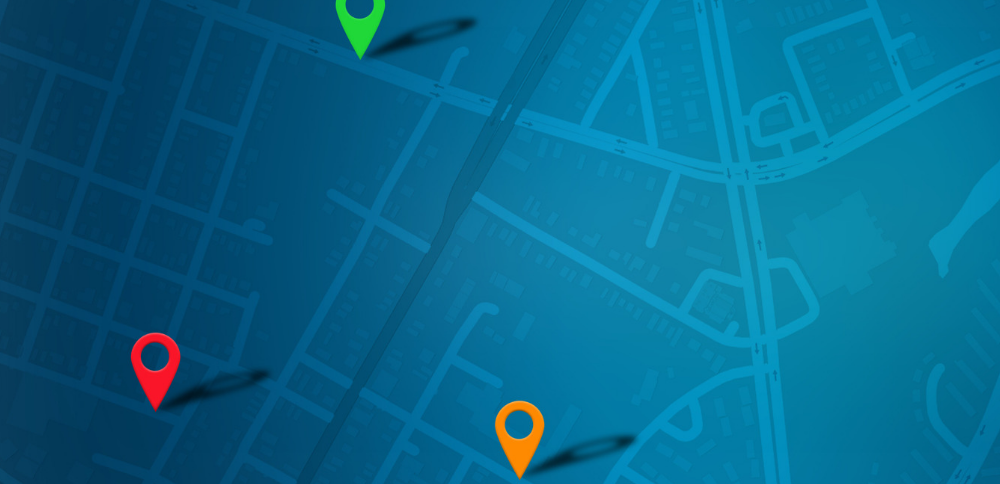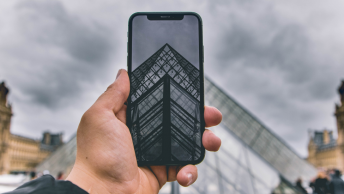It has always been important to deliver timely and relevant messages to customers. In an age where consumers receive countless brand messages, brands that use location data to provide tailored content see higher levels of engagement and increased ROI. Here are 5 ways to use location based marketing for your brand.
5 Ways to Use Location Based Marketing For Your Brand
1. Local Search Ads
Local search advertising is the most basic type of location based marketing. Your brand can gain new business by launching ad campaigns targeting locals.
Local search ads display only to users in a relevant geographic area. A user inputs a search term with a specific location, such as “3D Printing NYC” or “3D Printing 10017” and gets a list of businesses in that vicinity.

Tailor messages to locals searching for your product or service. Increase your visibility and help potential customers find you more easily by setting up a search ad on Google and other major search engines.
2. Geotags on Social Media
Geotagging is a valuable marketing tactic that allows social media users and brands to tag photos, videos, and other posts with a specific location.
Most social media networks, including Twitter, Facebook, Instagram, Flickr, and Youtube allow users to share and search for content by location. By geotagging your social posts, your brand’s content can be found by users looking for information relevant to a particular location, neighborhood, or city.

For example, a local business can geotag an image on Instagram to target an audience in a specific area. The above brand tagged a beach boardwalk to target local beachgoers.
Brands can also leverage geotagging to target a local event demographic. A brand interested in targeting tech enthusiasts can geotag a post with the location of a local tech event. Create a marketing campaign targeting the event goers by combining geotags and the event hashtag.
Regardless of your industry, if you want to target a local demographic, geotagging is an effective tactic.
3. Real-Time Geolocation Marketing
Geolocation marketing lets brands target mobile device users. With geolocation marketing, businesses can reach consumers as soon as their phone’s GPS is nearby.
For example, Starbucks offers “Mobile Order and Pay” which allows customers to purchase items and pick them up at the nearest store.


Like a personal shopper, the grab and go feature provides convenience for customers by minimizing wait times for products and services.
By setting up a geofence, you can also deliver messages and discounts to customers within walking distance of your location. Brands can become front of mind for a consumer who otherwise may not have been in a purchasing mindset.
4. Beacon Technology As a Detailed Tour Guide
United Airlines became one of the first U.S. airlines to use beacon technology to help airport visitors. Before, passengers had to rely on confusing signs to navigate through through terminals. With beacon technology, customers receive alerts when they are within range of desired locations.
Similarly, retailers can digitize their stores by using beacons to deliver personalized information to visitors. Beacons can help visitors find products in a store, send suggestions based cart history, and deliver information on stock levels.
By using beacons to push notifications and offers, brands can provide relevant information to consumers based on where they are and what they are doing. Beacons can also be used to relieve major frustrations for time-pressed consumers.
5. Cross-Technology Location Based Marketing
Cross-technology marketing is on the horizon and will change the way that brands interact with their customers.
Augmented reality is expected to become a trend. Augmented reality apps like Pokemon go can use location data to guide users and provide branded entertainment.
As technology becomes more integrated and devices communicate more with each other, brands will have more opportunities to enhance the customer experience.
SEE ALSO: Why Marketing Should Be The Center of Your Business Strategy
Have you considered location based marketing for your business? What tactics have you used to reach local customers?











